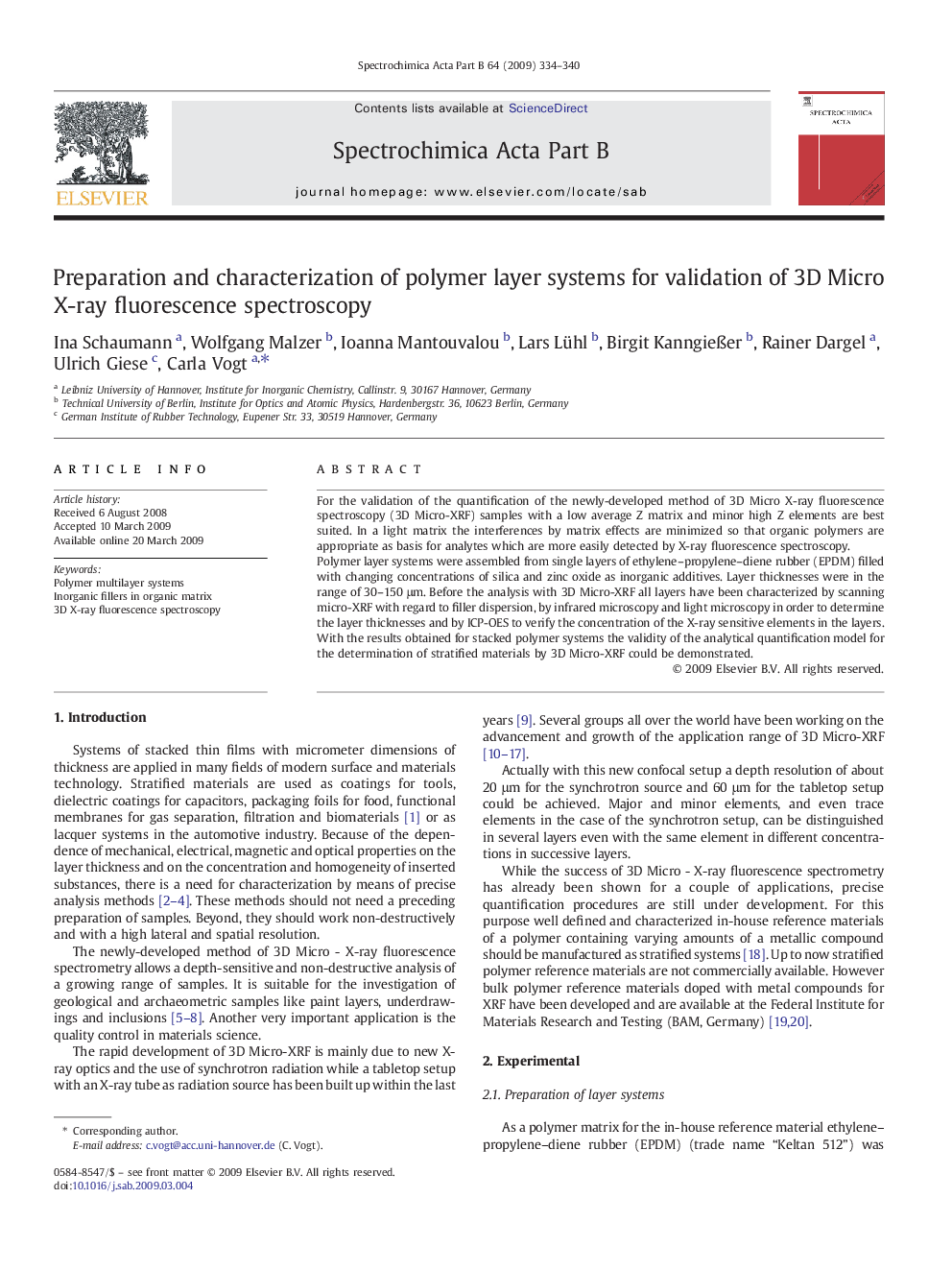| Article ID | Journal | Published Year | Pages | File Type |
|---|---|---|---|---|
| 1240398 | Spectrochimica Acta Part B: Atomic Spectroscopy | 2009 | 7 Pages |
For the validation of the quantification of the newly-developed method of 3D Micro X-ray fluorescence spectroscopy (3D Micro-XRF) samples with a low average Z matrix and minor high Z elements are best suited. In a light matrix the interferences by matrix effects are minimized so that organic polymers are appropriate as basis for analytes which are more easily detected by X-ray fluorescence spectroscopy.Polymer layer systems were assembled from single layers of ethylene–propylene–diene rubber (EPDM) filled with changing concentrations of silica and zinc oxide as inorganic additives. Layer thicknesses were in the range of 30–150 μm. Before the analysis with 3D Micro-XRF all layers have been characterized by scanning micro-XRF with regard to filler dispersion, by infrared microscopy and light microscopy in order to determine the layer thicknesses and by ICP-OES to verify the concentration of the X-ray sensitive elements in the layers. With the results obtained for stacked polymer systems the validity of the analytical quantification model for the determination of stratified materials by 3D Micro-XRF could be demonstrated.
